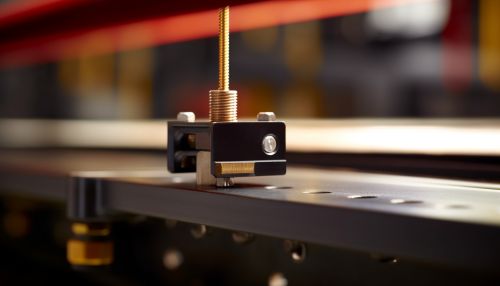Stress (mechanics)
Introduction
Stress in mechanics refers to the internal forces that particles of a continuum exert on each other. It is a measure of the average force per unit area within a body across an imaginary plane, resulting from externally applied forces, uneven heating, or permanent deformation. The dimension of stress is that of pressure, and therefore its unit in the International System of Units (SI) is the pascal (Pa), which is equivalent to one newton per square meter (N/m²).
Types of Stress
There are three main types of stress: tensile stress, compressive stress, and shear stress.
Tensile Stress
Tensile stress is the stress state leading to expansion; that is, the length of a material tends to increase in the direction of the applied force. It is the result of a pull or force acting along the length of a material.
Compressive Stress
Compressive stress is the stress applied to materials resulting in their compaction (decrease of volume). When a material is subjected to compressive stress, then this material is under compression.
Shear Stress
Shear stress is a stress state where the stress is parallel or tangential to a face of the material, as opposed to normal stress when the stress is perpendicular to the face.
Stress Analysis
Stress analysis is an engineering discipline that uses many methods to determine the stresses and strains in materials and structures subjected to forces or loads. The methods employed in stress analysis include analytical, experimental and numerical methods.
Stress-Strain Relationship
The stress-strain relationship is the relationship between the stress applied to a material and the strain that results in the material in response to the applied stress. It is a fundamental property of materials and is often described using a stress-strain curve.
Stress Concentration
Stress concentration is a location in the body that is under higher stress than the rest of the body. Stress concentrations occur when there are irregularities in the body that cause an interruption to the flow of stress. These irregularities can include holes, sharp corners, cracks, and changes in the cross-sectional area of the body.
Stress Measurement
Stress in a material body can be measured using various techniques. These techniques include strain gauges, photoelasticity, and brittle coating methods.


